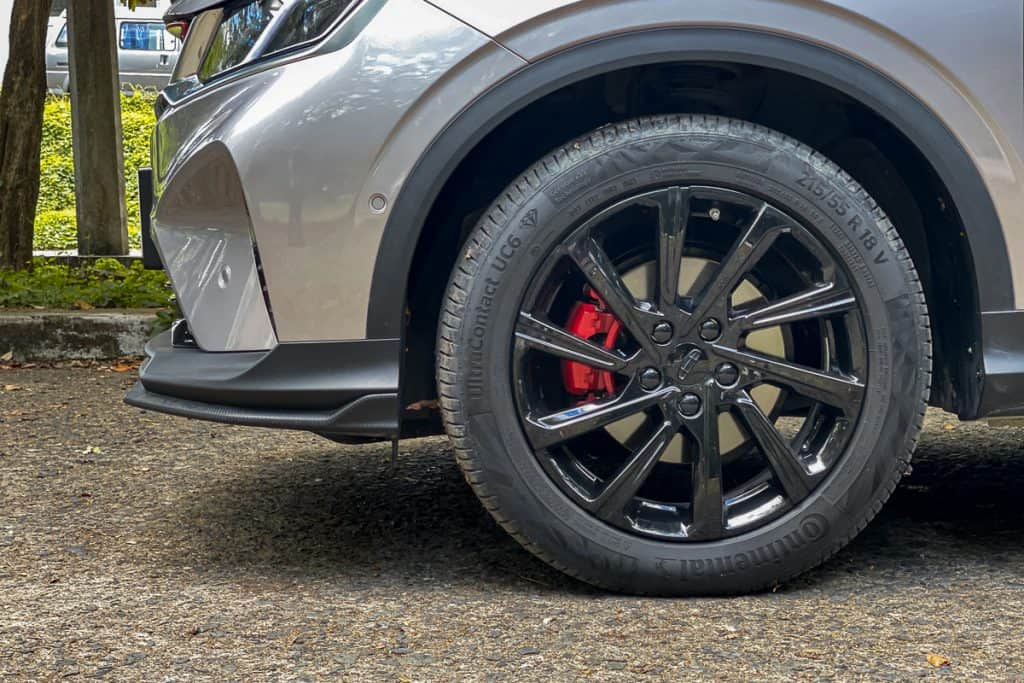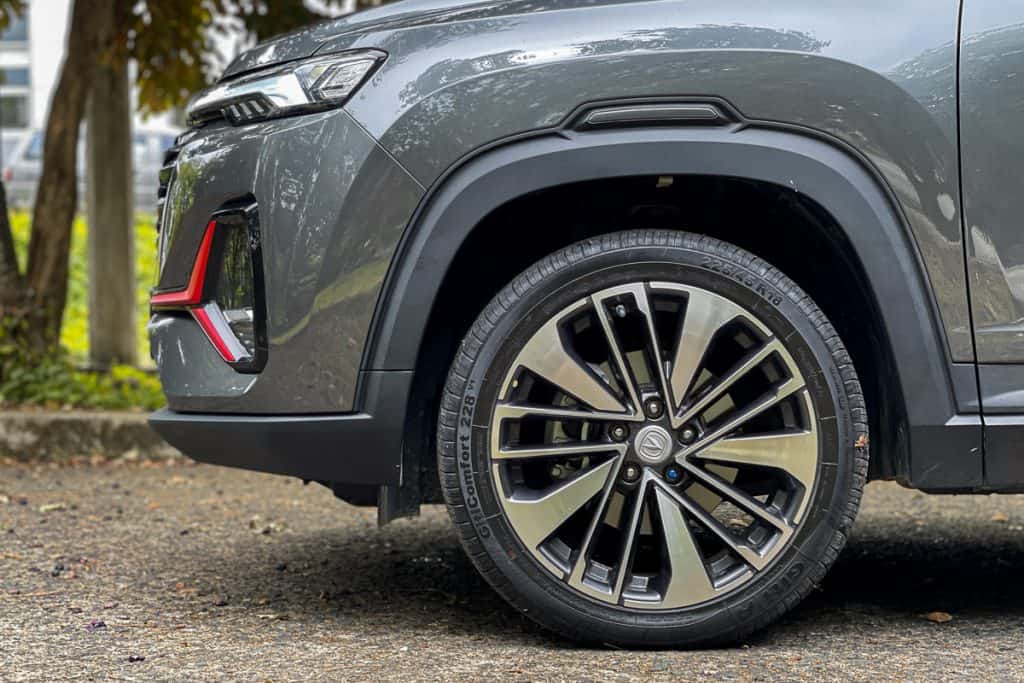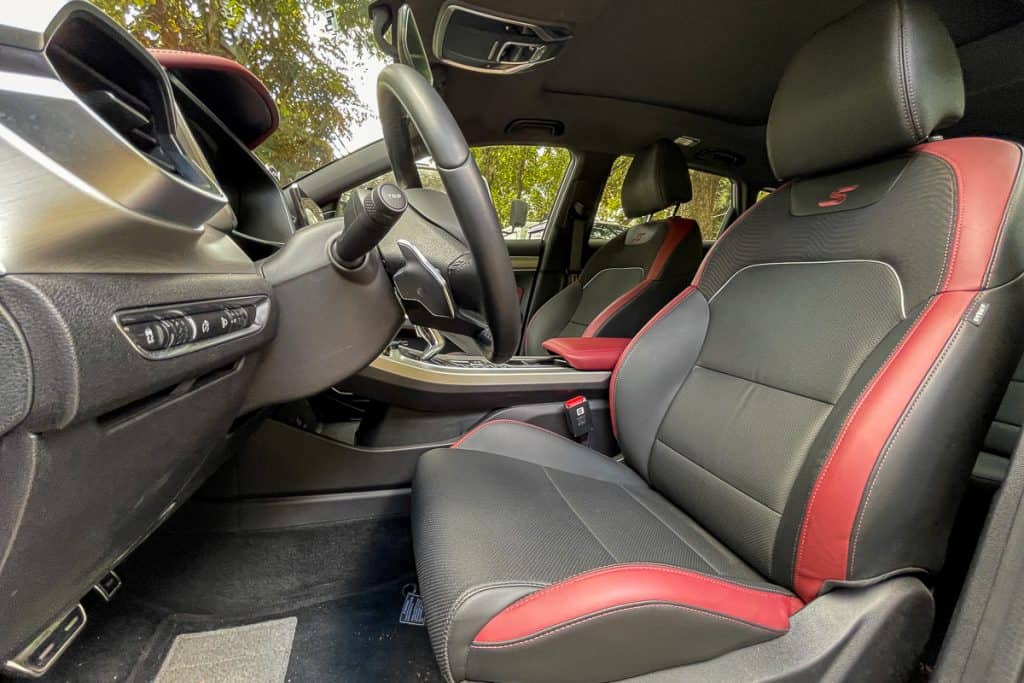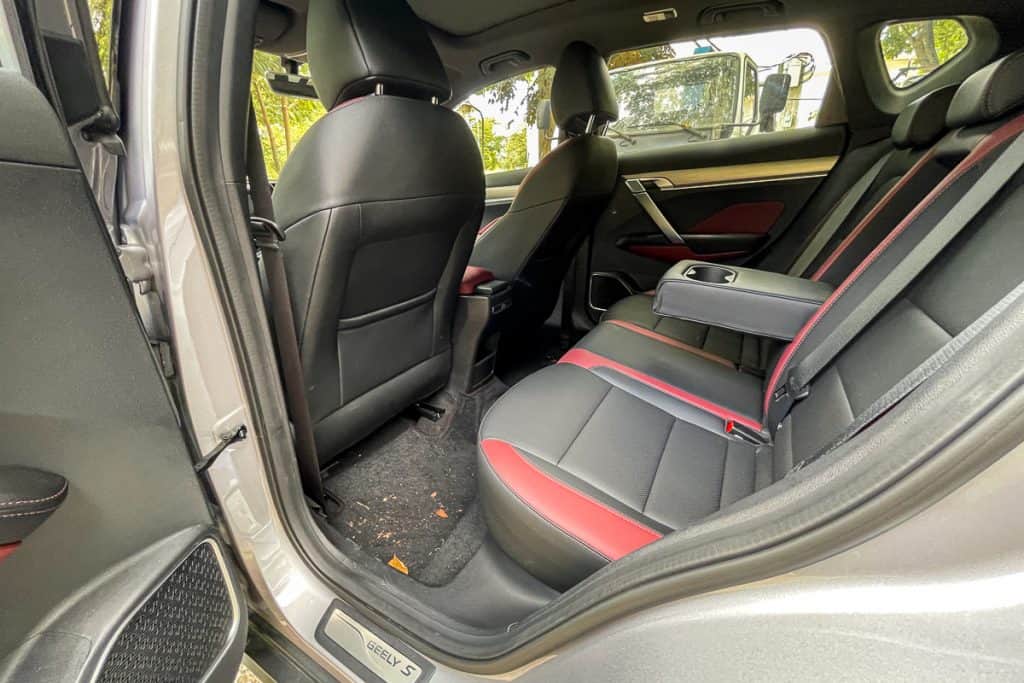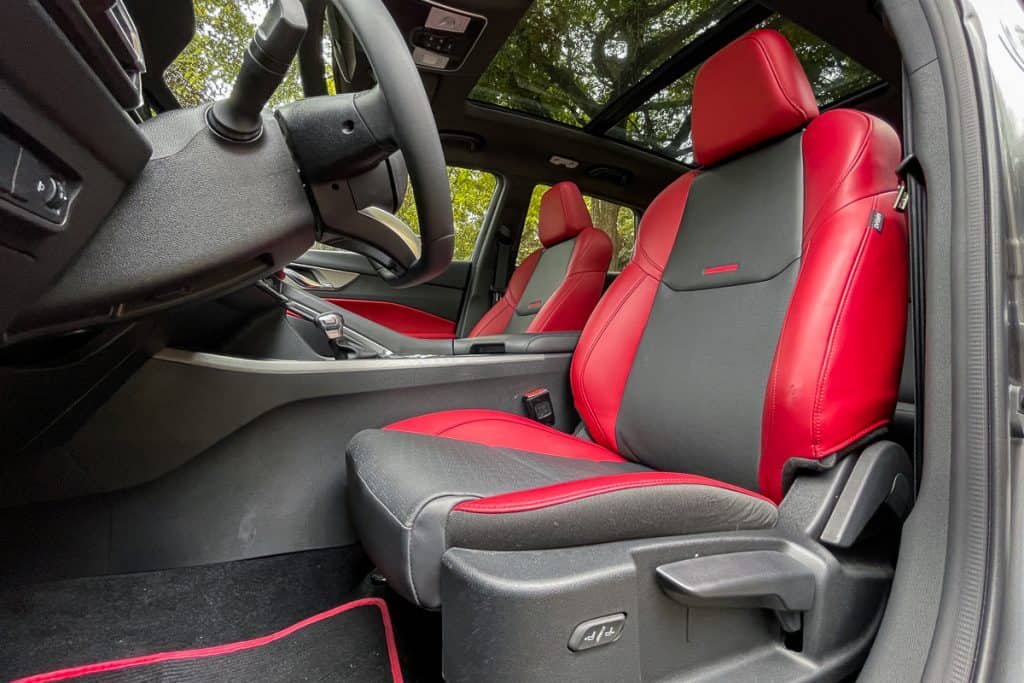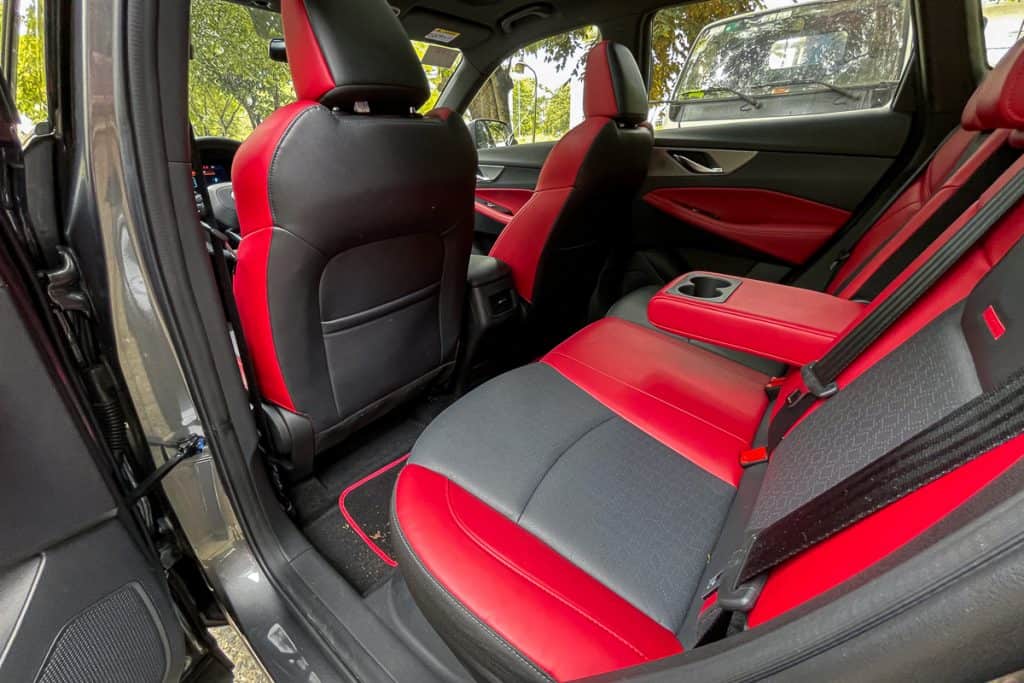When Changan Philippines launched the CS35 Plus back in March, I couldn’t help but think that the Chinese automaker, which is among the newest contenders in the Philippine market, has the Geely Coolray in its sights. That’s the case when you look at the spec sheets of both vehicles side by side, especially more so when you get to drive them one after the other.
I was able to do the latter for this comparison review, and all I can say at this point is that it was a tight rivalry – one riddled with preferential biases. But if you want a comparison on various fronts based on the simultaneous testing, read along.
Exterior
Both CS35 Plus and Coolray come with a sporty demeanor; the latter is just more aggressively styled than the former. Elements like non-subtle spoilers, carbon-fiber prints on lips, and quad exhaust pipes amplify the Coolray’s sportiness. Both come with red accents, though they are more prominent with the Changan.
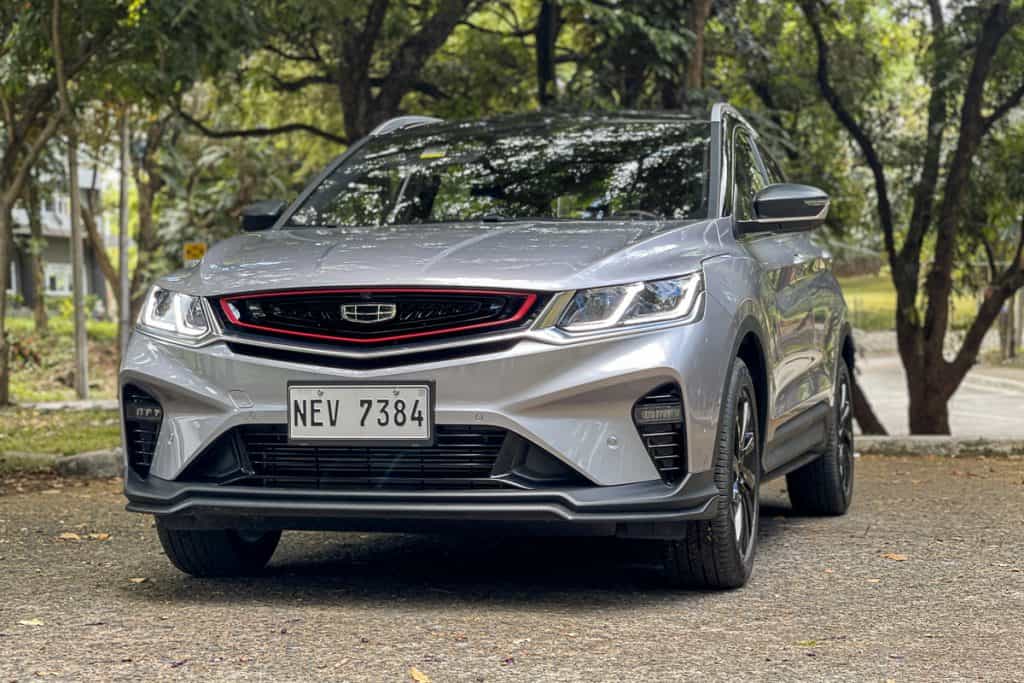
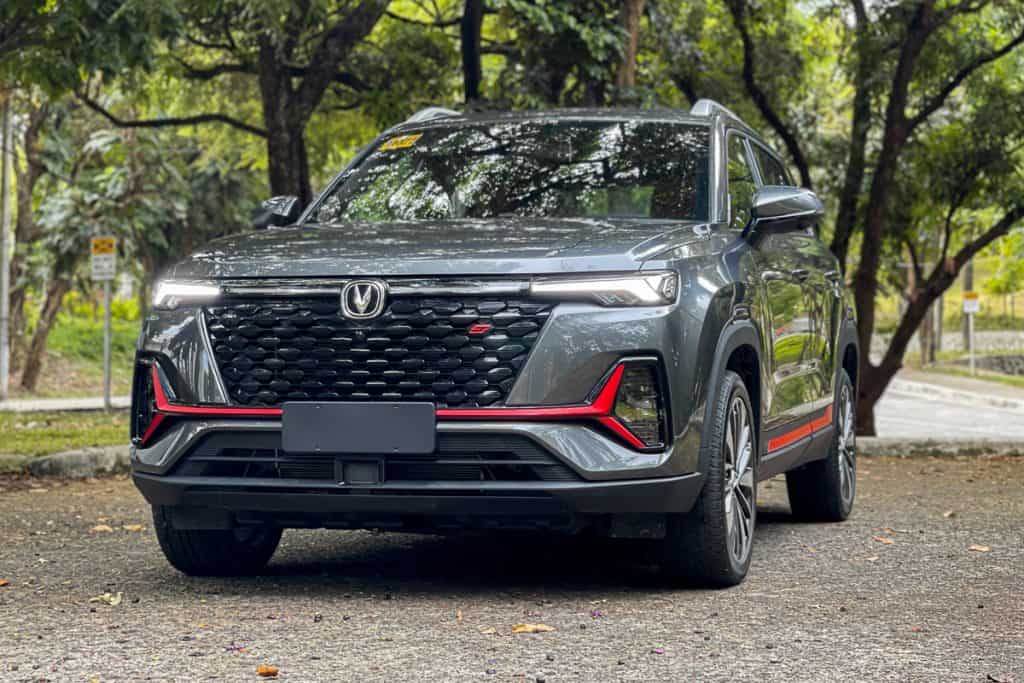
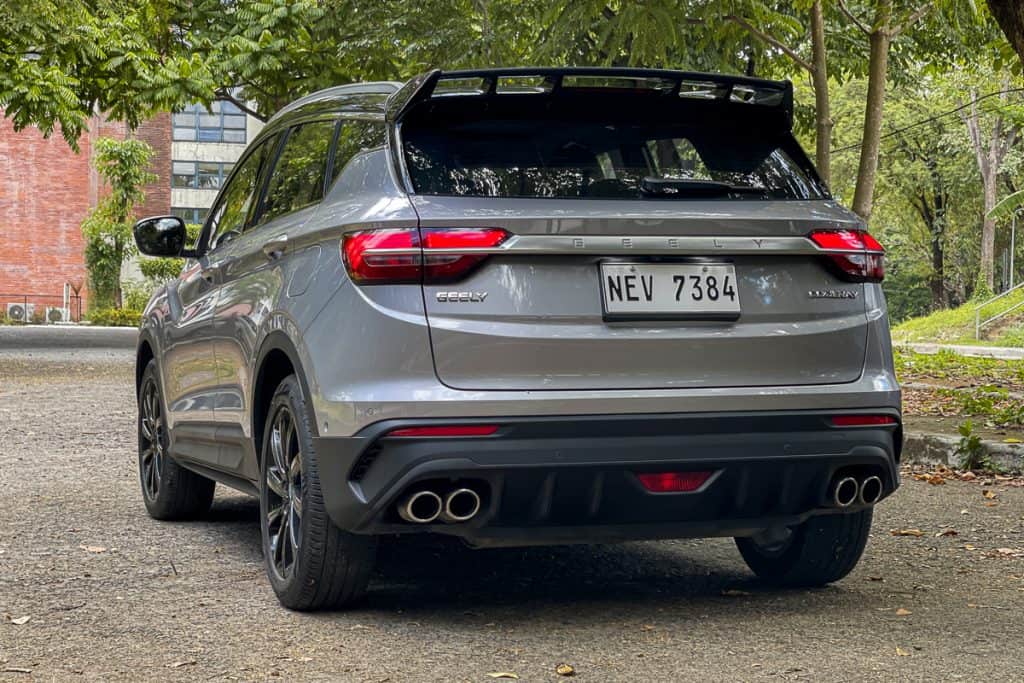
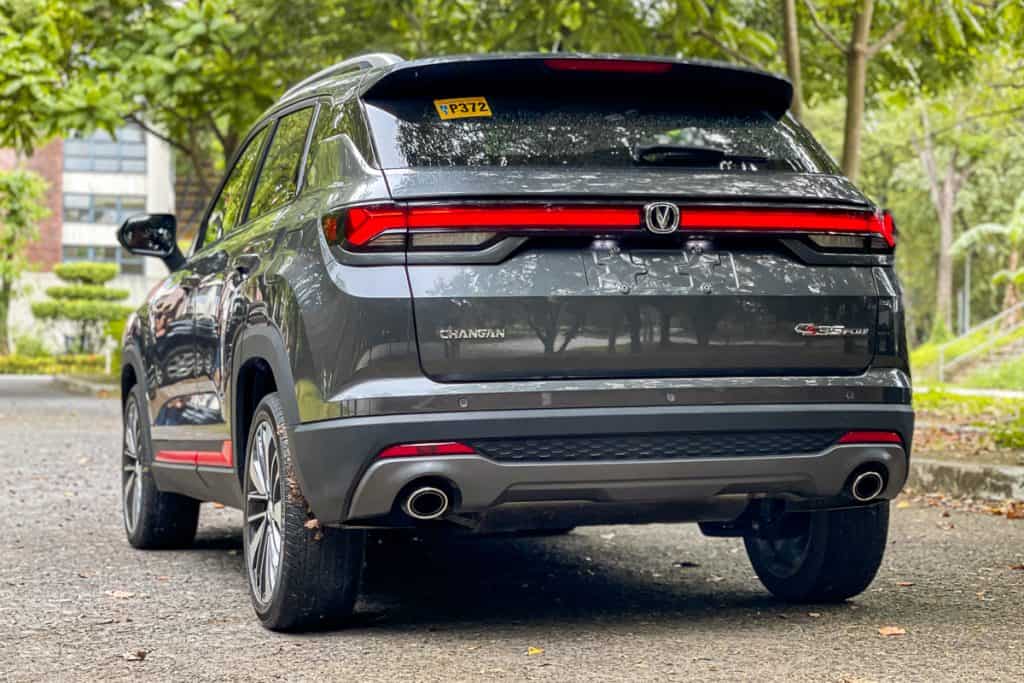
In terms of equipment, both crossovers have LED lighting elements front and back, but the Changan has light bars on both ends, which make it a more head-turning vehicle, especially at night. The Coolray Sport Limited that we have here has a two-tone theme with a black roof, which isn’t the case with the CS35 Plus Hype variant that was lent out to me. However, the top-of-the-line Luxe trim comes with that scheme for an added price. The wheels are all glossy black for the Coolray, while the CS35 Plus makes use of diamond-cut alloy wheels – both sized at 18 inches in diameter.
Styling is up for preference so you may already have your biases at this point. But if you were to ask me, I’d prefer the CS35 Plus subtle approach to styling. I also like the LED light bars, so there’s that.
Size-wise, the CS35 Plus is marginally bigger than the Coolray in terms of width and height. These two crossovers are as long as each other in terms of wheelbase and overall length.
Interior
Both brands followed the same design ethos to make their subcompact crossover contenders look more premium. Red leather, brushed aluminum trims, panoramic sunroof, and a pair of screens are found on both models – though the shade of red on the Changan is unapologetic, which made me prefer the Coolray (considering that I’m not a fan of red upholstery).
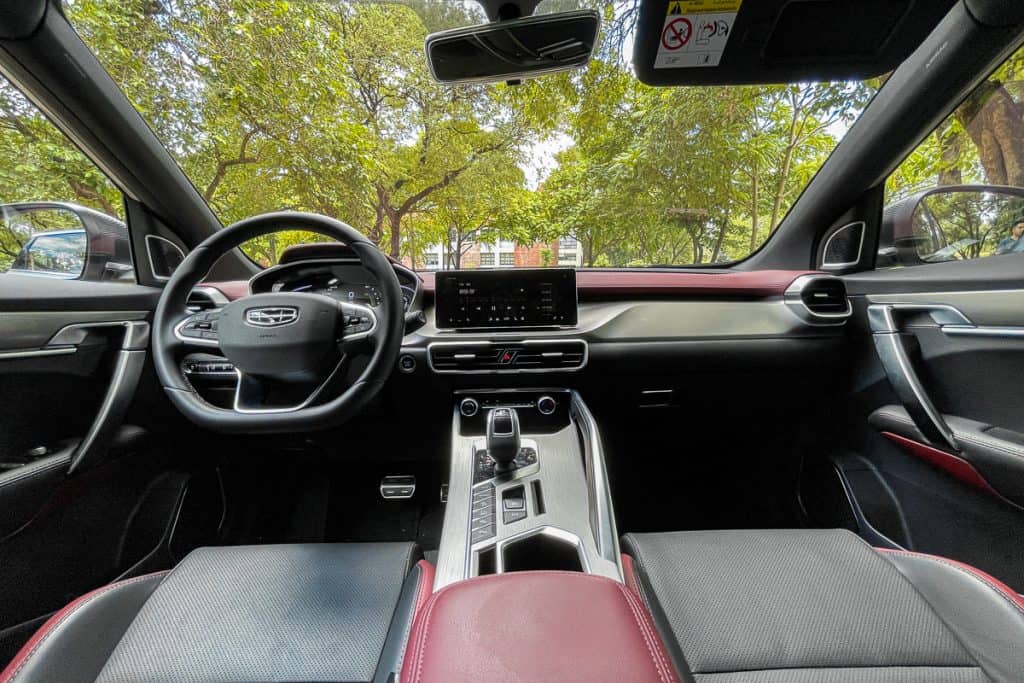
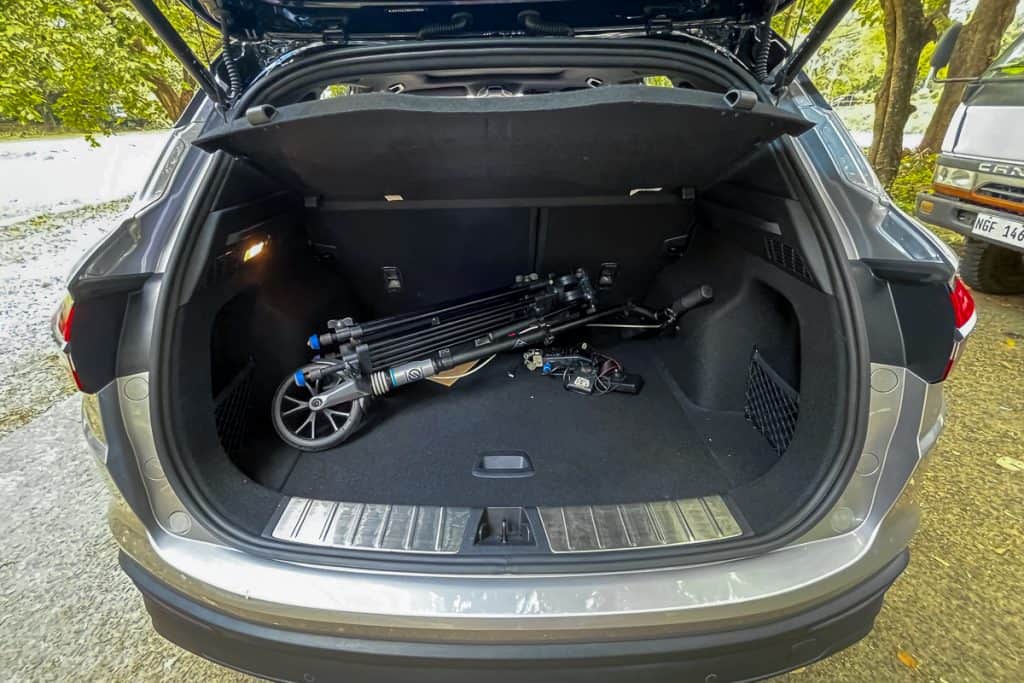
What the CS35 Plus has an advantage on is in cabin layout. Its front cabin felt less cramped than the Coolray, plus it has the advantage of having a better storage point for smartphones, which was regrettably absent in the Coolray. The elbow points and seat cushions are also softer with the CS35 Plus, while the presence of rear A/C vents should add a huge plus for your passengers.
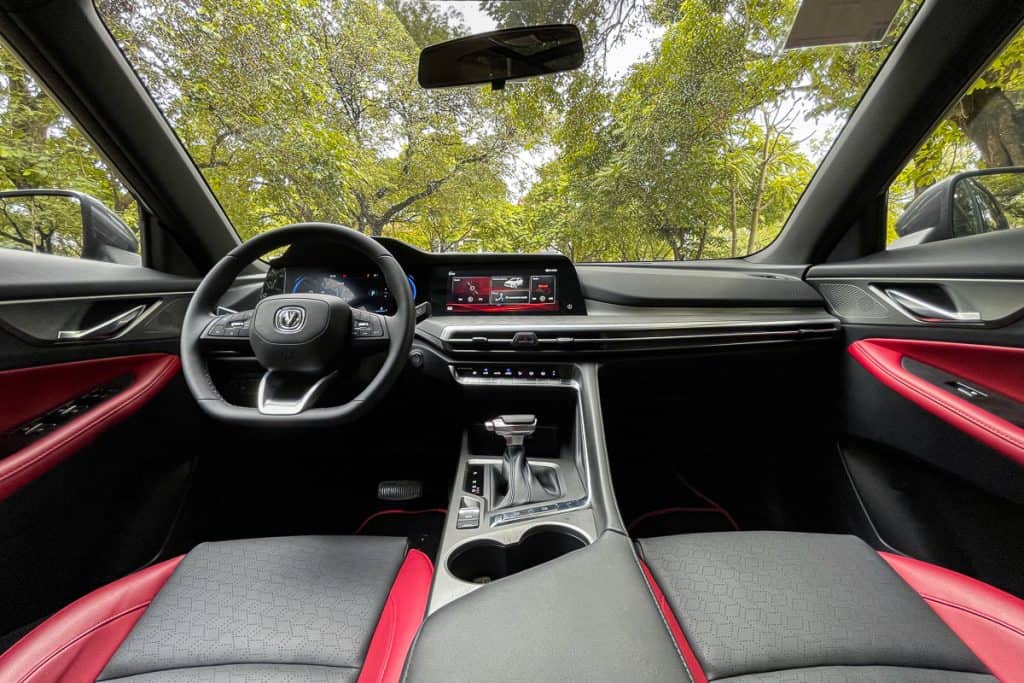
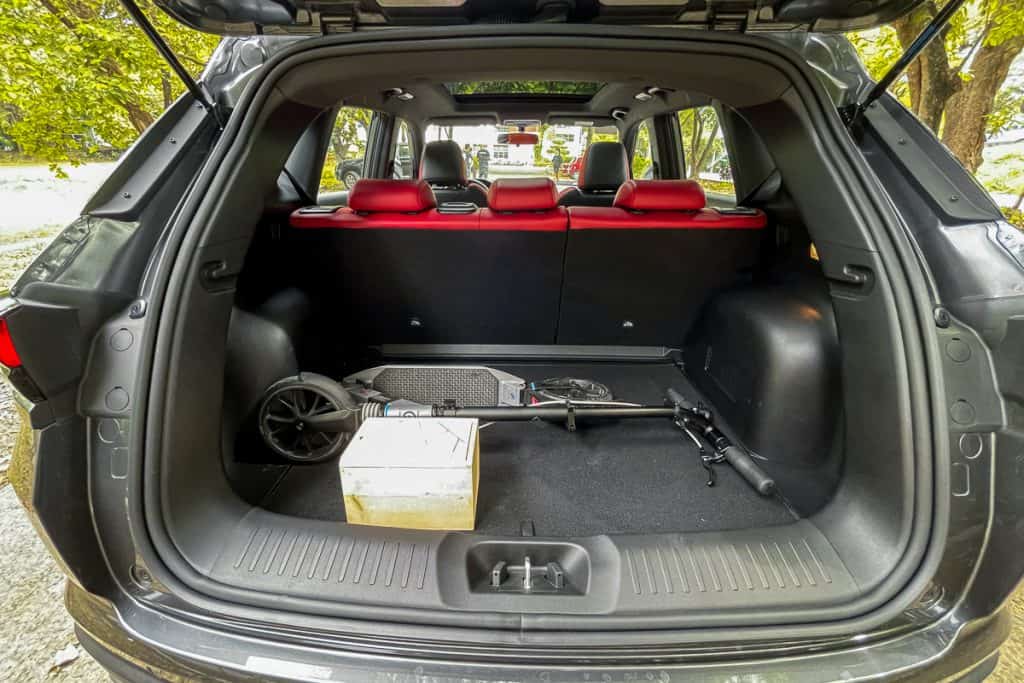
Usable space is quite similar between these two rivals, with abundant legroom and cargo room, as well as vertical and horizontal space, for two people at the back. Three would be tight on both, but possible.
Tech & Safety
This is one of those parts where preferential bias plays a huge role. Both cars come with a massive infotainment system (without Apple CarPlay and Android Auto) and a digital instrument cluster, but the Coolray looks evidently better and has a better user interface. The CS35 Plus, however, has wireless charging on its arsenal of tech niceties.
Both cars come with a remote start feature and an electronic parking brake with auto brake hold. They are likewise equipped with similar passive and active safety features, including a 360-degree camera, though the display on the Changan is outstanding; it has easily the clearest camera display I’ve ever seen on a mainstream vehicle, especially at this price point. The remote start feature also works more seamlessly in the Changan.
Meanwhile, the Coolray has the advantage of seat cooling and automatic parking – both absent in the CS35 Plus. A power tailgate is present on the Coolray SE and notably absent in the CS35 Plus Hype; it’s available on the Luxe variant.
However, the CS35 Plus, even on its mid Hype trim, is already available with Adaptive Cruise Control (ACC) with an auto emergency braking feature. Such things could be deciding factor for some buyers, hence the preferential bias I was talking about.
Personally, I’d prefer the safety and convenience that the ACC brings to the table over the automatic parking feature. Truth be told, I prefer parking a vehicle by myself rather than letting a machine do a basic task for me.
Driving & Handling
Both the CS35 Plus and Coolray come with a turbo engine connected to a wet 7-speed dual-clutch transmission sending power to the front wheels.
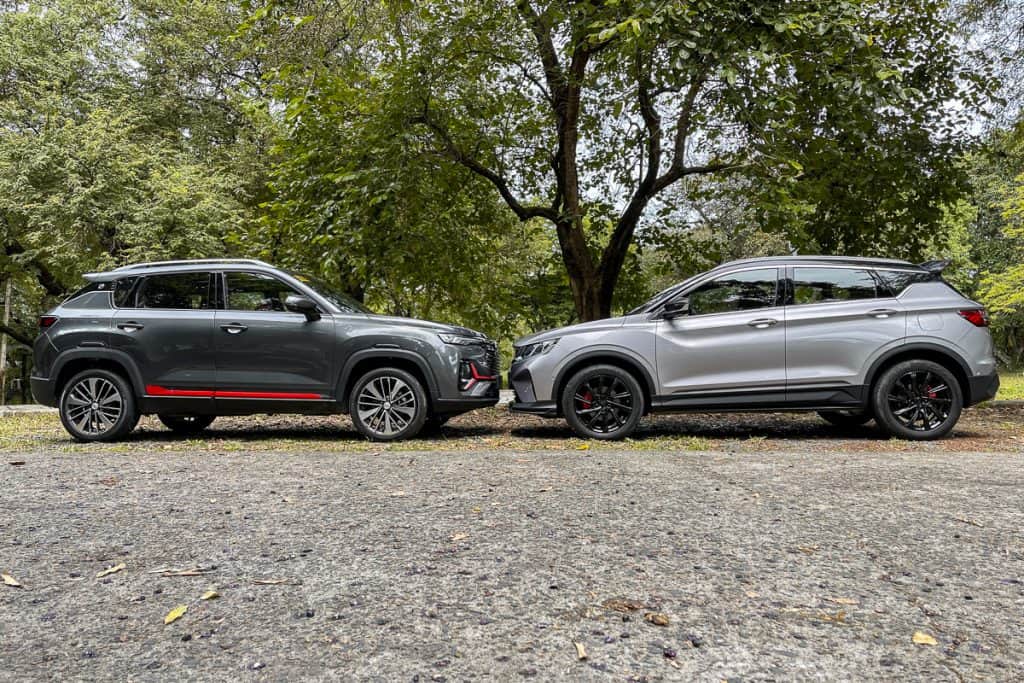
The differences lie in the engine displacement and the number of cylinders. The Coolray has a three-cylinder 1.5-liter gasoline engine, while the CS35 Plus uses a four-pot 1.4-liter. The Geely puts out 177hp and 255Nm of torque, while the Changan has slightly more torque at 260Nm but down on horses at 158hp.
For menial drives, the differences between these numbers were indiscernible; there’s a huge margin in terms of on-road behavior, though.
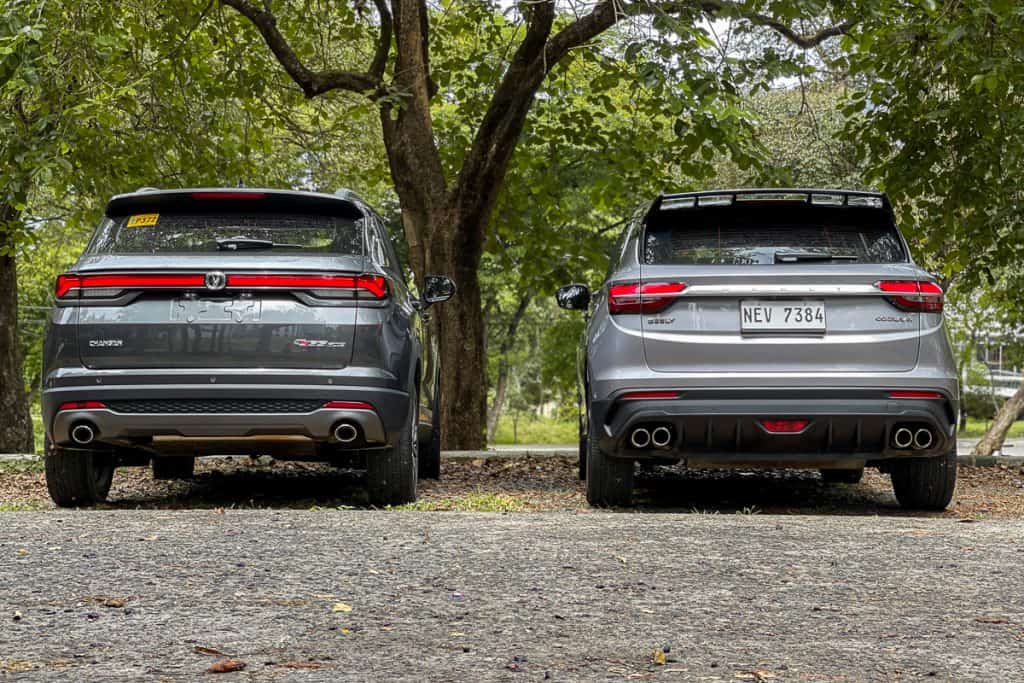
In my tests, the Coolray had a more linear drive than the CS35 Plus, having the advantage of significantly less turbo lag. Corners were also more predictable with the Geely as it handled more like a hatchback rather than a crossover.
That said, hands down, the Coolray easily took the cake from the CS35 Plus in terms of performance and driving dynamics. The responsiveness of the Coolray’s turbocharged engine also added to the driver’s overall comfort, considering that anticipation was less stressful. But if you gear towards overall passenger comfort rather than sporty drive, then the Changan is for you.
Fuel Efficiency
With the differences in their powertrains, these two have varying fuel consumptions as well. The Changan CS35 Plus registered 8-9 km/L within the city, which was a touch better than the Geely Coolray’s 7-8 km/L. The average speed for the urban fuel efficiency test was 10-20 km/h.
Meanwhile, the Coolray edged out the CS35 Plus in terms of highway fuel economy, yielding 18 km/L at an average speed of 90 km/h. The Changan read 15.3 km/L within the same route and speed.
Of note, fuel economy tests were done with only two passengers on board and with minimal cargo.
Verdict
Then, there’s the clincher: pricing. The Geely Coolray Sport Limited that was tested has a price tag of P1,258,000, while the Changan CS35 Plus Hype sells for an introductory price of P968,000. The more equipped two-tone CS35 Plus Luxe is being offered for P999,000. Expect Changan to add P100,000 to these prices beyond the introductory offer.
Considering the traits and differences between these cars, it’s now up to you if the Coolray’s better driving dynamics and better highway fuel efficiency are enough to offset the advantage of the CS35 Plus in price, features, and overall comfort. Consider your preferential biases as well, along with the after-sales services that these brands offer.
Of note, Geely Philippines now has several dealerships across the country, now nearing 30 by our latest count. Changan Philippines likewise are scattered throughout the Philippines, considering that some Hyundai showrooms have been (and are being) converted into Changan dealerships (with more to come this year).
But as we always say, don’t just take our word for it. Test drive both vehicles at your own convenience and choose the car that more strongly pulls your heartstrings.


